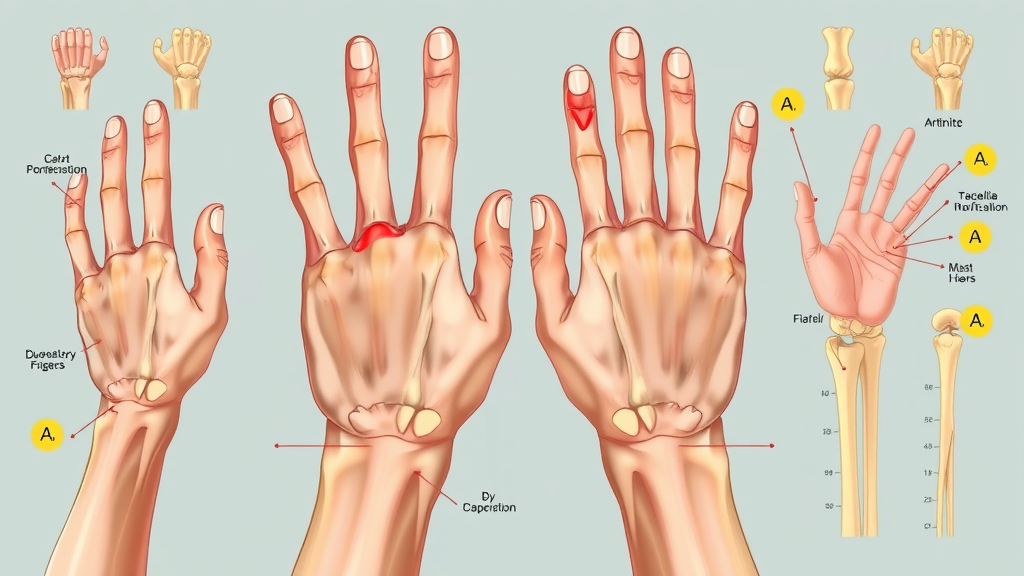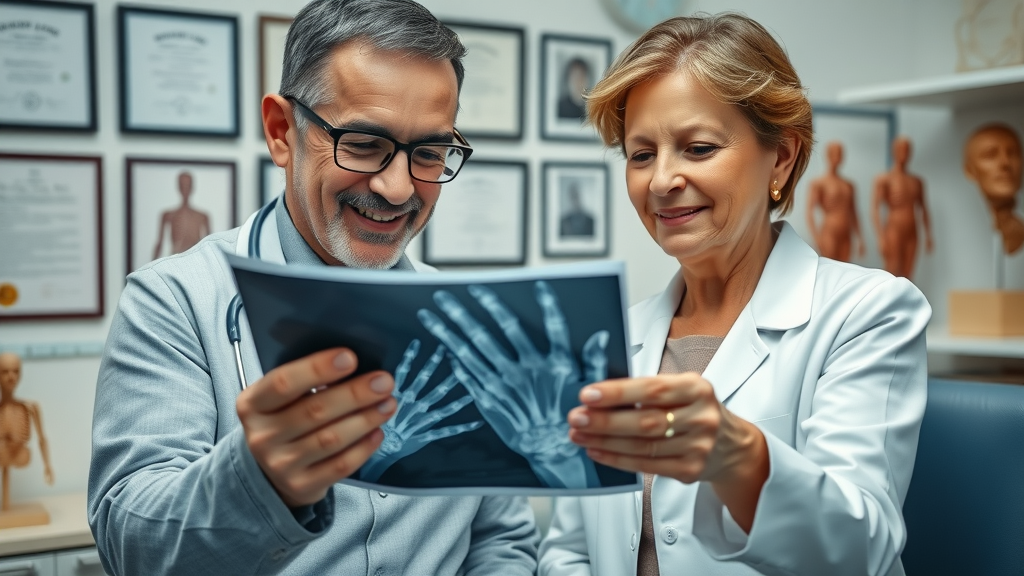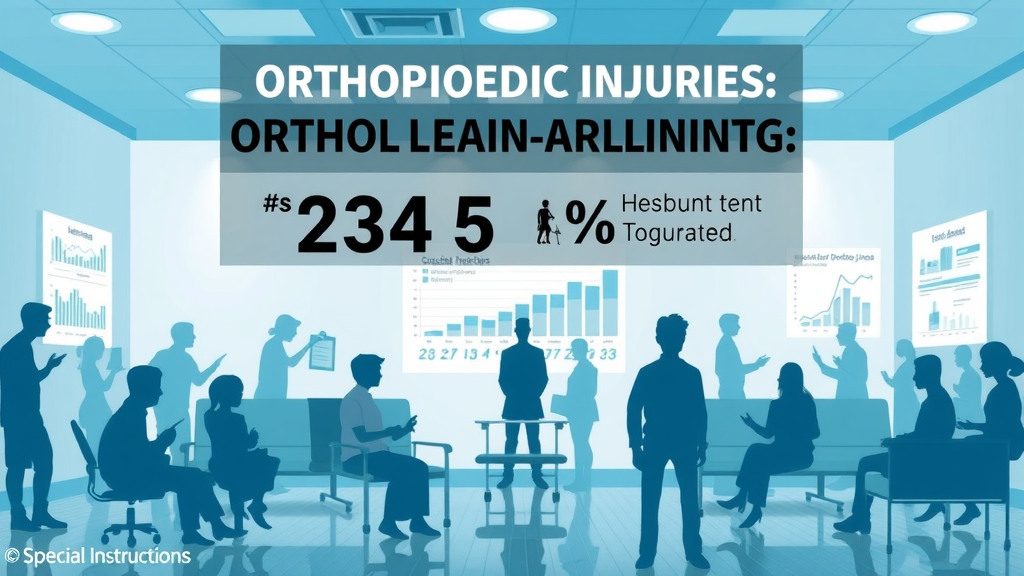Did you know that over 54 million Americans suffer from arthritis pain, impacting their daily quality of life? For many, living with arthritis means facing unpredictable pain and joint stiffness each day—but what if medication wasn’t the only answer? At DentonHand.com, innovative at-home exercises offer a proven path to lasting relief, increased independence, and practical pain management for arthritis sufferers. Read on as we reveal essential facts, hands-on routines, and expert-backed strategies so you can take control of your arthritis pain—starting today.

Revealing the Impact: Surprising Facts About Arthritis Pain & Everyday Relief through At-Home Exercises
- Did you know that over 54 million Americans suffer from arthritis pain?
- Many individuals experience joint pain daily, impacting their independence and well-being.
- Pain relief does not have to mean only medication – effective at-home exercises can make a significant difference.
Arthritis pain and joint pain are among the leading causes of disability in the United States, affecting men and women alike. Every day, people battle swelling, stiffness, and decreased mobility, often resigning themselves to living with discomfort or relying solely on medication. Yet, mounting research supports a brighter outlook: everyday relief through easy, at-home exercises can reduce reliance on pharmaceuticals and empower individuals to regain function, physical health, and the joy of pain-free movement. By understanding the broad impact of arthritis pain, you are better positioned to make informed decisions about your health journey and begin integrating natural pain relief strategies that have the potential to transform your daily life.
DentonHand.com specializes in providing educational, supportive resources for individuals facing arthritis pain, joint pain, and the daily challenges these conditions bring. By promoting everyday relief strategies—including guided exercise routines designed to target key areas of discomfort—patients report sustainable improvements in both mobility and quality of life. So, if you thought arthritis management was limited to medication, physical therapy, or invasive procedures, think again—at-home exercises may be the missing link you’ve been searching for.

Unlocking Everyday Relief: At-Home Exercises for Arthritis Pain at DentonHand.com – Achieving Practical, Sustainable Pain Management
At DentonHand.com, everyday relief is not just a tagline—it’s a holistic approach focused on practical, sustainable management of arthritis pain and joint pain. These targeted at-home exercise programs are crafted by experts to address the root causes of discomfort for those living with conditions like osteoarthritis, rheumatoid arthritis, or psoriatic arthritis. Unlike quick fixes, these routines are designed for consistency and long-term benefit, helping to gradually restore range of motion , improve grip strength, and reduce swelling.
Many who suffer from arthritis pain have experienced the frustration of fleeting pain relief through medication alone. DentonHand.com’s exercise solutions target areas especially prone to stiffness and inflammation, such as the fingers, wrists, and thumbs, providing evidence-based methods for lasting comfort . By engaging in simple, daily routines from the comfort of your home, you’ll not only be investing in pain relief but also preserving your overall joint health, independence, and ability to take part in everyday tasks. This guide will walk you through understanding arthritis pain, expert perspectives, and step-by-step routines to help you get started on your everyday relief journey.
Understanding Arthritis Pain and Joint Pain
- Types of arthritis (osteoarthritis, rheumatoid arthritis, psoriatic arthritis)
- How arthritis pain and joint pain develop
- Ways Everyday Relief: At-Home Exercises for Arthritis Pain at DentonHand.com targets relief
Arthritis pain comes in many forms, with osteoarthritis, rheumatoid arthritis, and psoriatic arthritis being the most common culprits. Each of these types of arthritis affects the joints differently: while osteoarthritis leads to joint degeneration with age or overuse, rheumatoid arthritis is an autoimmune condition that causes inflammation and pain, and psoriatic arthritis is typically marked by swelling, pain, and changes in the skin.
Regardless of type, arthritis pain often develops as a result of ongoing inflammation, joint wear-and-tear, or immune system activity. The symptoms go beyond simple aches—they involve stiffness, reduced range of motion, and, in severe cases, deformity or loss of joint function. That’s why at-home exercises recommended by DentonHand.com are so important: they directly target stiff or painful joints, promote blood flow, and strengthen surrounding muscles, all while remaining gentle and low-impact. These everyday routines are carefully designed to be safe, flexible, and suitable for a wide range of arthritis sufferers.

Expert Insight – Why At-Home Arthritis Pain Relief Matters
"Evidence shows that targeted movement is one of the most effective, low-risk approaches for managing arthritis pain and joint pain at home." – Dr. Sarah Thompson, Board-Certified Hand Specialist
The key to transforming daily life with arthritis is simple: consistent, specialized movement . Dr. Sarah Thompson, a leading hand specialist, emphasizes how tailored exercise routines create lasting pain relief with little risk of side effects compared to medication or surgery. These at-home routines not only address joint stiffness and pain, but also help prevent further damage, promote overall function, and keep patients actively engaged in their own recovery. By incorporating these strategies, DentonHand.com empowers patients to be proactive in their arthritis management and sustain a higher quality of life .
The goal of arthritis pain relief is to preserve and even improve your joint function—giving you back your independence and enjoyment of everyday activities. Unlike passive approaches or overreliance on anti-inflammatory drugs, at-home exercises place the patient in the driver's seat, making it easier to adapt routines and maintain motivation. Whether you are newly diagnosed or have been managing symptoms for years, it’s never too late to benefit from integrating these hands-on strategies under professional guidance.
Targeted At-Home Exercises for Effective Pain Relief
- Finger stretches and tendon glides for arthritis pain relief
- Simple wrist circles to ease joint pain
- Grip strengthening routines for sustained pain relief and improved everyday function
- Thumb opposition exercises to support arthritis management
- Gentle range-of-motion for finger and hand joints
| Exercise | Primary Benefit | How Often |
|---|---|---|
| Finger stretches | Reduces stiffness, increases mobility | Daily |
| Wrist circles | Improves flexibility, lowers joint pain | Daily |
| Grip strengthening | Enhances function, relieves pain | 3x/week |
| Thumb opposition | Boosts dexterity, aids arthritis pain relief | Daily |
| Range-of-motion drills | Supports joint health, eases pain relief | Daily |
Implementing these at-home exercises as part of your daily or weekly routine can lead to notable improvements in joint pain and reduction in symptoms of arthritis. For instance, finger stretches and tendon glides target connective tissues and help prevent or loosen contractures, while wrist circles and thumb opposition movements are crucial for preserving coordination and dexterity. Consistency is vital—results are often seen with regular practice, and only a few minutes per day can add up to lasting comfort and improved independence.
Grip strengthening, often overlooked in many arthritis pain relief programs, is particularly valuable. It not only builds the muscles that support your hand joints but also improves your ability to perform essential daily activities—opening jars, carrying bags, and even writing. By incorporating all of these strategies and listening to feedback from your own body, you’ll develop a pain relief routine tailored for your unique needs, improving both short-term symptoms and long-term joint health.
Step-by-Step Guide: How to Practice Everyday Relief At-Home Exercises for Arthritis Pain at DentonHand.com
Warm-Up Routines for Joint Pain Prevention
Before beginning any exercise for arthritis pain relief , a gentle warm-up is crucial. Start by immersing your hands in warm water or holding a warm, moist towel around your fingers and wrists for 5–10 minutes to increase blood flow and reduce initial stiffness. Small, circular hand and wrist motions, performed at a relaxed pace, further assist in preparing the tendons and muscles to work efficiently.
Simple warm-up exercises—such as slow finger extensions, making gentle fists, and releasing—help lubricate the joints and make subsequent exercises more comfortable. These preventive routines are designed to minimize the risk of discomfort or injury as you proceed, setting you up for more effective, pain-free motion. DentonHand.com recommends consistency, making warm-ups a non-negotiable part of your arthritis pain management routine.

Maintaining Consistency for Lasting Arthritis Pain Relief
Success in managing arthritis symptoms heavily depends on regular, consistent practice of targeted exercises. While skipping a session might seem inconsequential, over time, inconsistency can diminish the long-term benefits and delay improvements in joint pain and flexibility. Create a schedule or set reminders—whether it’s a printed calendar, a digital patient portal, or simply a visible note on your refrigerator—to integrate exercise seamlessly into your daily life.
Regular movement is proven to keep joints lubricated, reduce morning stiffness, and maintain muscle strength. Most importantly, steady practice means progress, and measurable progress brings motivation. Tracking achievements—such as improved grip strength or an easier time opening doors—serves as strong positive reinforcement, making it more likely for you to continue and maximize your results.
Listening to Your Body and Modifying for Comfort
When performing at-home exercises, always prioritize comfort and safety. It’s natural to experience some mild soreness when beginning a new activity, but sharp or persistent pain is a sign to stop and adjust. Listening to your body ensures that you don’t push beyond your current range of motion, which helps prevent strain or injury. If needed, adjust the number of repetitions, range, or intensity of exercises, and use supportive tools like stress balls or therapy putty as recommended by your healthcare provider.
For patients with more advanced arthritis pain, modifications may include performing exercises in a warm environment, using adaptive devices, or seeking guidance via a patient portal for remote monitoring. The goal is sustainable improvement—not perfection—so giving yourself grace and making gradual adjustments can lead to the most comfortable, effective path to pain relief.
Integrating Chiropractic Care and Professional Support for Arthritis Management
- When to consult a hand specialist
- The role of chiropractic care in arthritis management
- Combining at-home exercises with professional advice
While at-home exercises form the foundation of arthritis pain relief , some individuals benefit from professional guidance. Consulting a hand specialist is advisable if you notice persistent swelling, joint deformity, or lack of progress after consistent routines. Specialists can provide an accurate diagnosis, suggest modifications, and offer supplemental therapies such as massage therapy or customized splints.
Chiropractic care is another valuable component of a comprehensive arthritis management plan. Focused hand and wrist adjustments, soft tissue mobilizations, and ergonomic recommendations can relieve pain and support better joint alignment. DentonHand.com encourages patients to collaborate with healthcare professionals for optimal results; combining your at-home routine with in-office advice maximizes both effectiveness and safety.

What You'll Gain by Using Everyday Relief: At-Home Exercises for Arthritis Pain at DentonHand.com
- Reduce reliance on pain medication
- Restore flexibility and strength
- Regain confidence in daily tasks
- Experience natural, practical pain relief
By embracing everyday relief methods, you’ll likely see improvements not just in arthritis pain but also in your overall wellbeing. Reduced dependence on pain relievers lessens medication side effects, while renewed joint flexibility and strength mean you can handle everyday tasks with less fear and more confidence. These changes, though incremental, add up—making each day more manageable and enjoyable.
Ultimately, at-home exercise is about regaining a sense of control over your health journey. Even small increases in range of motion and hand strength lead to pronounced benefits in self-sufficiency and daily life, turning pain management into a process that works for you, not against you.
Common Types of Arthritis and Their Distinct Impact on Joint Pain
| Type of Arthritis | Common Joints Affected | Notable Symptoms |
|---|---|---|
| Osteoarthritis | Fingers, wrists, knees | Stiffness, pain, mild swelling |
| Rheumatoid | Hands, ankles | Swelling, fatigue, joint pain |
| Psoriatic | Fingers, toes | Redness, swelling, joint pain |
Each type of arthritis requires a unique approach. For example, osteoarthritis often benefits most from gentle mobility routines and strengthening exercises to support the affected joints. Rheumatoid arthritis sufferers might require shorter, low-impact exercises to avoid triggering inflammatory flares, while those with psoriatic arthritis can focus on reducing swelling and maintaining hand flexibility. Understanding your specific arthritis allows you to tailor your arthritis pain relief plan more effectively.
Essential Tips for Arthritis Pain Relief: Maximizing Results from At-Home Exercises
- Perform exercises slowly; avoid sudden force
- Use supportive tools as needed
- Stay hydrated and apply heat therapy before exercise if recommended
- Record your progress to motivate consistency
Simple adjustments can make a big difference in managing arthritis pain at home. Slow movements prevent unnecessary strain, while using tools such as putty, foam balls, or splints can increase comfort and promote longer-term progress. Don’t overlook the benefits of hydration and gentle heat; these prime the joints for activity and may further reduce discomfort.
Success is incremental—by tracking improvements, no matter how small, you stay focused on the positive trends. Whether you keep a journal, use a patient portal, or mark a wall calendar, celebrating achievements in flexibility, strength, or reduced pain increases both your motivation and the likelihood of maintaining an effective routine in the long run.

Video: Demonstrating Everyday Relief At-Home Exercises for Arthritis Pain at DentonHand.com
Seeing a clear, step-by-step demonstration can make new exercises less intimidating and more approachable. DentonHand.com offers professionally guided videos showing proper form, safe execution, and practical modifications—empowering you to perform each exercise with confidence. From finger stretches to grip strengthening routines, these visual resources ensure that even beginners achieve the safest and most effective technique for arthritis pain relief .
Videos provide visual cues not always obvious from written instructions—watch for expert adjustments, breathing techniques, and real-time modifications designed for those with limited mobility. Referencing these videos frequently helps cement your knowledge, reinforces daily habits, and minimizes the risk of injury so you can reap the full benefits of everyday relief.
Video: Proper Technique for Grip Strengthening to Manage Joint Pain and Arthritis Pain
Grip strength is a cornerstone of hand function, and mastering the correct method is crucial for lasting improvements in arthritis pain and joint pain. DentonHand.com’s instructional videos break down each step, emphasizing how to properly hold, squeeze, and relax various supportive devices—such as therapy putty or foam balls.
Proper grip strengthening not only combats joint pain but also directly supports everyday tasks like holding utensils or turning doorknobs. Knowing what to look for—symmetrical motion, controlled pressure, and restful pauses—ensures you aren’t compensating or straining during the routine. Visualizations further underscore common pitfalls and show adaptation strategies for every stage of arthritis management .
Answers to People Also Ask: Everyday Relief At-Home Exercises for Arthritis Pain
What is the best exercise for arthritic hands?
The best exercise for arthritic hands often involves finger stretches, tendon glides, and gentle range-of-motion activities. These routines help reduce stiffness, increase circulation, and restore normal movement in the fingers and hand. Integrating them daily can significantly lessen arthritis pain and maintain or even improve hand function over time.
Does squeezing a ball help arthritis in the hands?
Yes, squeezing a soft foam ball or therapy putty is a proven way to build grip strength and support joint health. This exercise targets the muscles around the hand joints affected by arthritis pain and encourages blood flow, promoting healing and pain relief. It’s important to use moderate resistance and avoid overexertion, as too much force may worsen discomfort.
What is the best exercise to reduce arthritis pain?
While different routines work better for different individuals, range-of-motion drills (like slowly opening and closing the hand, making gentle fists, or extending the fingers) consistently rank among the most effective. These movements keep joints lubricated, maintain flexibility, and provide sustainable pain relief —especially when combined with stretching and strengthening exercises tailored for arthritis management.
What is the home remedy for arthritis in the hands?
In addition to targeted exercises, proven home remedies include warm compresses, paraffin wax baths, and gentle self-massage for the hands. Staying hydrated, using anti-inflammatory diets, and getting enough rest round out a comprehensive self-care plan for arthritis pain relief . Always consult your healthcare provider before starting new remedies, especially if you have significant inflammation or additional health conditions.
Top FAQs on Everyday Relief: At-Home Exercises for Arthritis Pain at DentonHand.com
- How long before seeing results from at-home arthritis pain relief exercises?
- Can I combine these exercises with medication for joint pain?
- Are these routines safe for all types of arthritis?
- What if I experience pain relief only temporarily?
Many patients notice mild improvements in joint pain and flexibility within 1–2 weeks of starting regular at-home exercises. Consistency is key—for lasting changes in arthritis pain , aim for several weeks of uninterrupted practice. These routines can be safely combined with physician-prescribed pain medication and are generally appropriate for all types of arthritis, though some conditions may require custom modifications. If pain relief is only temporary, review your routine for proper form, and consider consulting a hand specialist to ensure your exercises are suited for your type of arthritis.
Using At-Home Arthritis Pain Relief to Transform Your Daily Life
"With regular, gentle movement, I finally regained my confidence and independence – and significantly reduced my arthritis pain." – Actual DentonHand.com client
The transformative power of Everyday Relief: At-Home Exercises for Arthritis Pain at DentonHand.com is reflected in stories like these. Patient-centered routines allow you to reclaim daily activities, reduce discomfort, and build a future with less dependence on medication. No matter your background, consistent and gentle movement offers a practical foundation for better days ahead.
Take Charge – Start Your Everyday Relief Journey for Arthritis Pain at DentonHand.com Today
Don’t wait for pain to dictate your schedule— start your journey with Everyday Relief: At-Home Exercises for Arthritis Pain at DentonHand.com. Explore personalized resources, connect with experts, and discover how simple, daily effort can lead to profound improvements in comfort, mobility, and overall enjoyment of life.
To further enhance your understanding and management of arthritis pain through at-home exercises, consider exploring the following resources:
-
The Arthritis Foundation’s article, Two-minute Exercises for Pain Relief , offers quick, effective workouts designed to alleviate arthritis discomfort.
-
The Mayo Clinic’s guide, Exercising with arthritis: Improve your joint pain and stiffness , provides comprehensive advice on incorporating exercise into your arthritis management plan.
These resources offer practical exercises and expert guidance to help you manage arthritis pain effectively at home.
 Add Row
Add Row  Add
Add 




Write A Comment